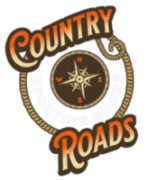
Gearing Up for Bow Season: Essential Prep for West Virginia Archery Hunters
As the lazy days of summer give way to the crisp air of fall, West Virginia’s bowhunters are eagerly anticipating the start of bow season. Archery and crossbow seasons for deer and bear are set to open on September 28, 2024 in West Viginia. With opening day just around the corner, now is the perfect time to start prepping. Let’s get into the essential things every West Virginia bowhunter should do to ensure a successful and safe hunting season.
1. Equipment Check and Maintenance
Since your bow is your most important piece of equipment, it deserves a thorough inspection before the season starts. Check for any signs of wear on the strings, cables, and cams. If you’re not confident in your ability to perform a full tune-up, consider visiting a local archery shop.
Don’t forget to inspect your arrows and broadheads. Make sure your arrows are straight and undamaged, and your broadheads are razor-sharp. Practice with the same broadheads you’ll use for hunting to ensure accuracy.
2. Physical Preparation
Bowhunting often requires holding a draw for extended periods and making precise movements. Strengthen your core and upper body with exercises like planks, push-ups, and resistance band training.
Regular target practice is crucial. Set up a practice routine that mimics hunting situations, including shooting from elevated positions and at various distances. Remember, ethical hunting means being confident in your ability to make a clean, quick kill.
3. Scounting and Stand Placement
August is prime time for scouting. Look for signs of deer activity such as trails, rubs, and droppings. Trail cameras can be invaluable tools for understanding deer patterns. When placing stands, consider wind direction, natural funnels, and food sources.
4. Essential Gear for West Virginia Bowhunters
While your bow is the star of the show, don’t neglect other essential gear. Invest in quality camouflage suitable for early season conditions in West Virginia. Scent control products are crucial, as early season hunts often mean warmer temperatures and more human odor.
Safety should always be your top priority. Falls from tree stands are the leading cause of injury to hunters. Always use a full-body safety harness and follow proper tree stand safety protocols.
5. Understanding West Virginia Regulations
Familiarize yourself with West Virginia’s hunting regulations. The West Virginia Division of Natural Resources provides a comprehensive guide to hunting and trapping regulations. Pay special attention to bag limits, hunting hours, and any changes for the 2024 season. Make sure you have all necessary licenses and permits well in advance of opening day.
6. Weather Considerations
Early fall in West Virginia can bring variable weather conditions. Be prepared for everything from warm, sunny days to cool, rainy mornings. Dress in layers to adapt to changing temps throughout the day. The National Weather Service provides detailed forecasts for hunting areas across West Virginia.
7. Ethical Considerations
As responsible bowhunters, we have an obligation to make clean, ethical shots. Practice shooting from various positions and distances to make sure you’re comfortable with your effective range. Familiarize yourself with deer anatomy and proper shot placement. If you do wound an animal, be prepared to track it.
8. Local Resources
Take advantage of local resources to hone your skills and connect with fellow hunters. The West Virginia Bowhunters Association offers information on local clubs and events. Many local archery shops also host pre-season clinics and shooting competitions.
Successful bowhunting is all about the prep. By starting early and paying attention to the areas I’ve provided, you’ll be well-positioned for a safe and rewarding archery season in Wild, Wonderful West Virginia. Remember that the journey is just as important as the harvest. Enjoy the preparation process, respect the land and the game, and cherish the time spent in our beautiful forests.
Happy hunting, and may your arrows fly true!





 with brook, brown, and rainbow varieties. As temperatures warm in April and May, target smallmouth bass running up from deeper pools into tributaries. Other spring favorites include walleye, rock bass, bluegill, and musky. Remember to check local fishing regulations for size and possession limits.
with brook, brown, and rainbow varieties. As temperatures warm in April and May, target smallmouth bass running up from deeper pools into tributaries. Other spring favorites include walleye, rock bass, bluegill, and musky. Remember to check local fishing regulations for size and possession limits.